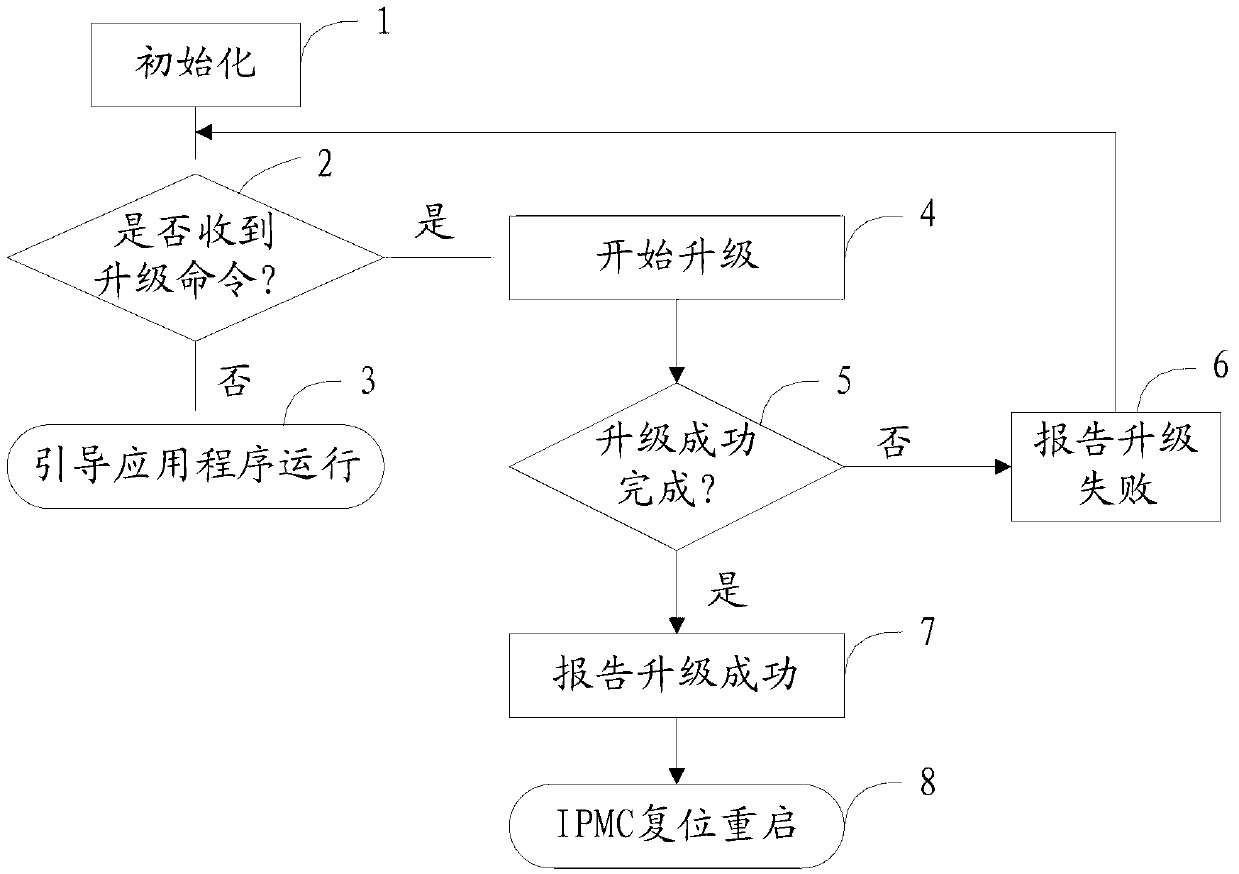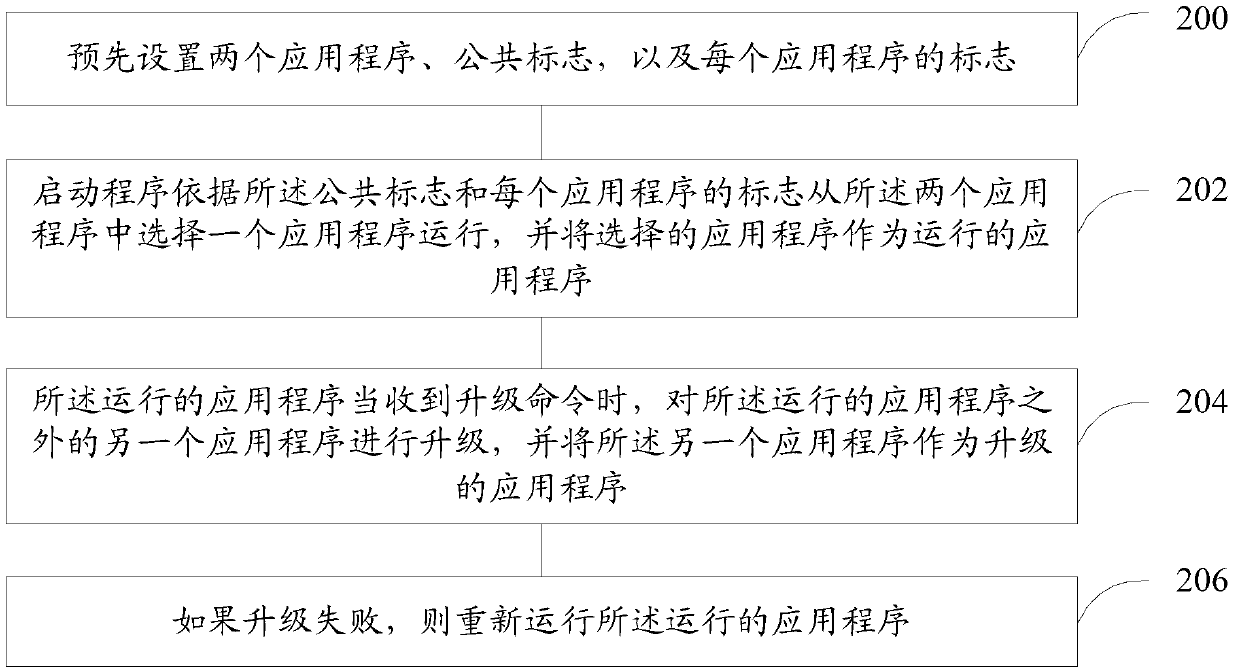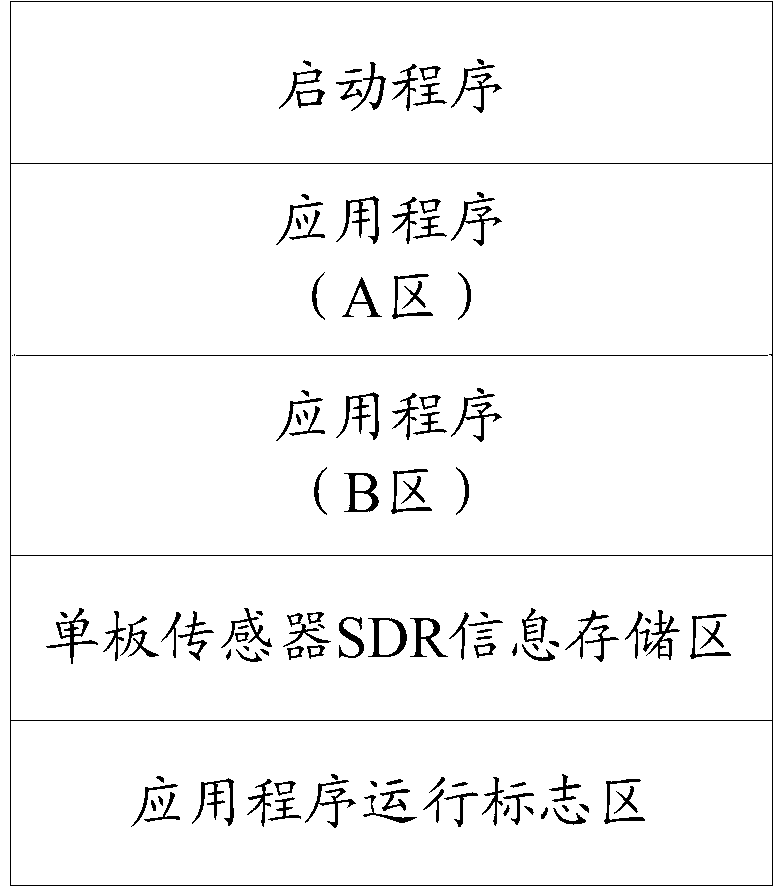Upgrading method and system for intelligent platform management controller
A technology of intelligent platform management and controller, applied in the field of communication, can solve problems such as application program not running normally, IPMC repairing, etc.
- Summary
- Abstract
- Description
- Claims
- Application Information
AI Technical Summary
Problems solved by technology
Method used
Image
Examples
Embodiment 1
[0070] At present, the IPMC program storage area is mainly divided into two areas, which are used to store the startup program and the application program respectively. The startup program is responsible for guiding the application program to run and realizing the upgrade function of the application program, and the application program is responsible for implementing the frame management function. . During the upgrade process, the startup program invokes the upgrade module therein to upgrade the application program, and then replaces the original application program with the upgraded application program.
[0071] Such as figure 1 Shown, be the flow chart of IPMC upgrade method in the prior art, described method can comprise:
[0072] 1. Initialization.
[0073] First, the IPMC is powered on, and the program runs from the "startup program" area for initialization.
[0074] 2. Determine whether an upgrade command has been received.
[0075] If no, go to step 3; if yes, go to...
Embodiment 2
[0110] Next, the upgrade method of the intelligent platform management controller will be discussed in detail through the second embodiment.
[0111] refer to Figure 4 , which shows a flowchart of a method for upgrading an intelligent platform management controller according to Embodiment 2 of the present invention, the method may include:
[0112] Step 400, pre-setting two application programs, common logo, and logo of each application program.
[0113] In the embodiment of the present invention, two application programs can be set in advance, and the public logo and the logo of each application program can be set, and the startup program can select an application program to run according to the public logo and the logo of each application program. During the running of the program, if an upgrade command is received, the running application program is used to upgrade another application program, so as to ensure that the normal operation of the running application program is...
Embodiment 3
[0208] refer to Figure 9 , shows a structural block diagram of an upgrade system for an intelligent platform management controller according to Embodiment 3 of the present invention, and the system may include: a setting module 900, an operation module 901, a first flag update module 902, and an upgrade module 903 , a second flag update module 904 , a rerun module 905 , a third flag update module 906 , a judging module 907 and a fourth flag update module 908 .
[0209] in,
[0210] A setting module 900, configured to pre-set two application programs, a common sign, and a sign of each application program;
[0211] Wherein, the common flag may include the next startup flag; the flag of each application may include the integrity flag of the application and the startup flag of the application.
[0212] The running module 901 is configured to select one application program from the two application programs to run according to the public flag and the logo of each application prog...
PUM
 Login to View More
Login to View More Abstract
Description
Claims
Application Information
 Login to View More
Login to View More - R&D
- Intellectual Property
- Life Sciences
- Materials
- Tech Scout
- Unparalleled Data Quality
- Higher Quality Content
- 60% Fewer Hallucinations
Browse by: Latest US Patents, China's latest patents, Technical Efficacy Thesaurus, Application Domain, Technology Topic, Popular Technical Reports.
© 2025 PatSnap. All rights reserved.Legal|Privacy policy|Modern Slavery Act Transparency Statement|Sitemap|About US| Contact US: help@patsnap.com



